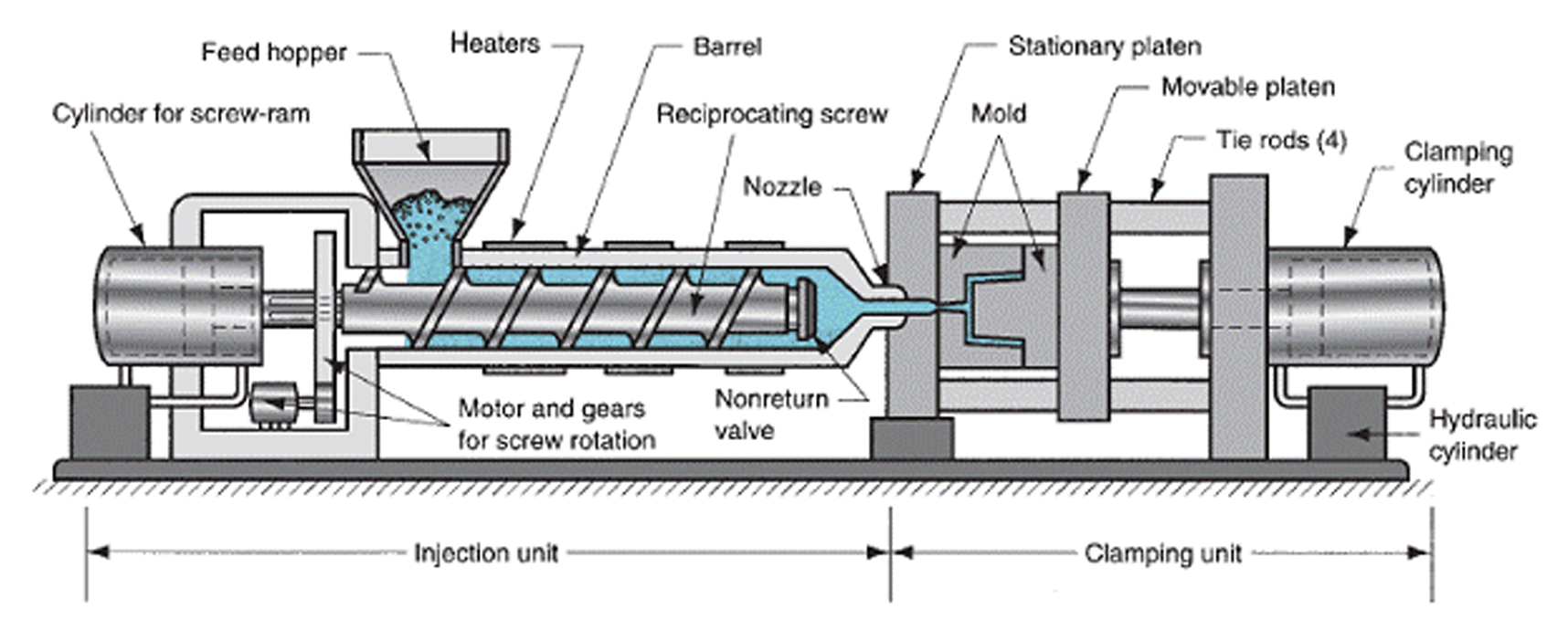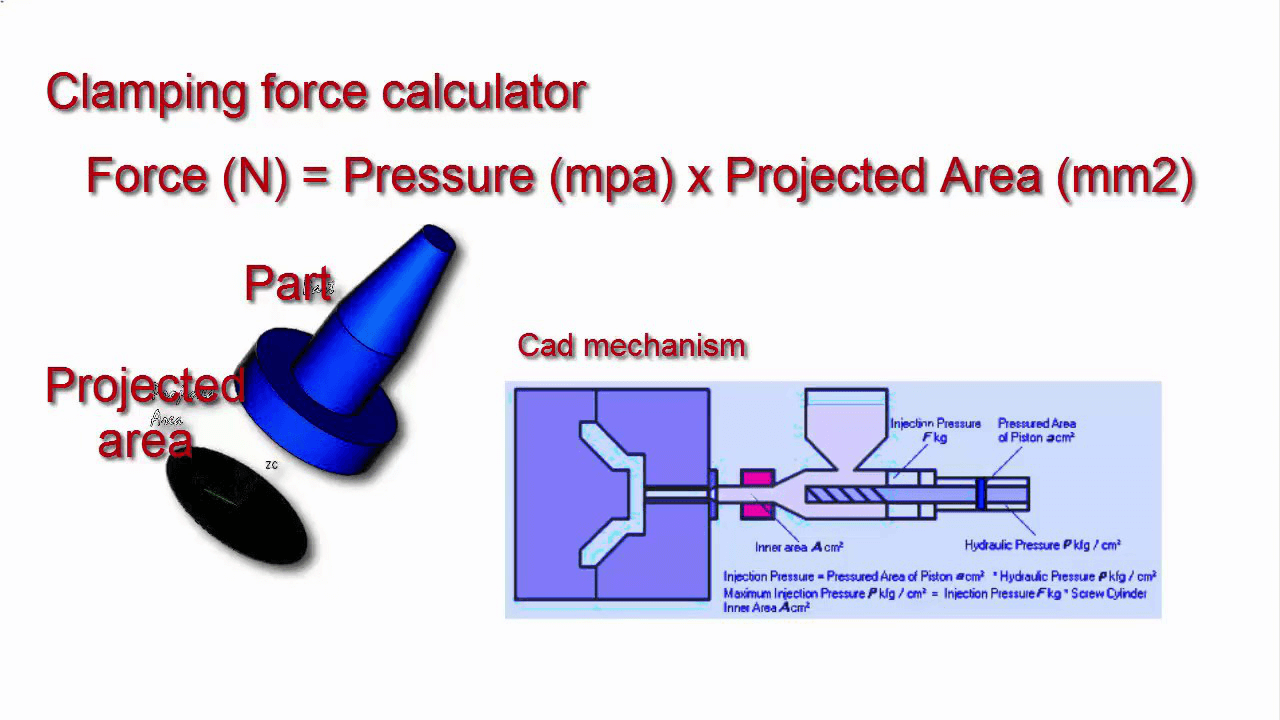Plastic Molded Parts Manufacturer: Guide about Molding Machines
A Guide to Molding Machine for Plastic Molded Parts Manufacturer
To ensure the right machinery size Plastic Molded Parts Manufacturer often turns towards Plastic injection molders. These injection molders have the experience and the expertise to determine the perfect machine size.
After all, it is their objective to find the optimal size of the machine to acquire the best results. They will provide the basic information, thus making it possible for the designer and the engineer to get good estimates.
When you have an idea regarding the machine size, you are in a better state to make decisions regarding sourcing a plastic injection molder who can fulfill your demands.
The experienced manufacturer offers a variety of presses. These presses allow them to facilitate a broad range of industries. They are able to design and develop complex, unique and out of the box parts.

The Guide to Moulding Machines
For starters, you would need to know about the classification and the rating of molding presses. You will find the information on the manufacturer’s website. For a generic point of view, this is how it may look like:
| Quantity | Press Size (Ton Injection Molding Presses) |
| 4 | 400 |
| 5 | 233 |
| 5 | 154 |
| 5 | 123 |
| 3 | 68 |
What does the above table mean?
The manufacturer uses tonnage in order to rate or classify the plastic injection molding presses. To be more accurate, it is the force or the clamping pressure that defines the rate and classification. You can have presses that run in size over 4000 clamping pressure or less than 5 tons of pressure.
The press ton rating directly influences the size of the machine. Greater the pressure, the bigger the machine. A machine that is rated for 68 tons has the capacity to deliver clamping pressure of 68 tons.
The pressure is important as it ensures that the molds remain close during the injection process. Therefore, the right amount of pressure is imperative. Too little or too much of the pressure can lead to quality issues.
In addition, the wrong pressure will result in flashing i.e. the excess of the material tends to move towards the edging of the parts. The pressure also has an impact on the viscosity of the material that the Plastic Molded Parts manufacturer will be using.
Melt Flow Index
MFI (Melt Flow Index) is the measure of the ease with which a melted thermoplastic polymer flows. Different materials react differently to the pressure. The reaction greatly depends upon their respective MFI.
When you use high pressure, you would be needing higher MFI. In addition to the presses, you also need to focus on the types of machines that are available. For instance, you can have a hybrid, electric or hydraulic.
Required Pressure or Clamping Force
To determine the size of the press, you need to consider several factors. For instance, you would have to focus on the polymer that you plan to use along with the size of the part. In addition, you even have to pay heed to the safety factor.
So, what is a safety factor? In lame man terms, we can say that it is an additional numerical percentage. You will add this percentage buffer to your calculation in order to avoid errors in the final product.
Plastic molded Parts Manufacturer believes that adding 10%, as the safety factor would yield the desired results. The Melt Flow Index also plays a part in identifying the required pressure to manufacturer components.
Sometimes, you might also add the plate size along with the part and mold size. A general rule of thumb is to use 2.5 times the part’s surface square inches that you are going to produce. Let us take an example, to clarify things.
Take apart with a 42 square inches surface. To find the presses size, you would have to multiple 42 x 2.5 = 105. Now add an additional 10% of the safety factor. You will need a minimum of 11 tons of clamping force to be on the safe side.
When you use 120 tons of press size, it will be able to effortlessly, handle your plastic injection molded products.

Different Types of Molding Machinery
The advancement in the injection molding industry has led to different types of molding methods. However, all these methods do have some common features. For starters, they all need a material they require molding. Usually, the material is in molten form.
Next, is the mold! It is the design, pattern or shape that you want the molten material to take. Lastly, you will need pressure or force. This force is responsible for shaping the material. It tends to expand it into the mold’s geometry.
The major difference of the molding machines lies within these basic features. For instance, a certain process would use specific materials. Likewise, others would have a unique mold shape. They might have used different pressure sources.
Thermoforming Molding Process
Thermoforming is one an effective molding technique that plastic molded parts manufacturers have been using. You would need a thermoplastic plastic or a thermoset. To press the plastic into the mold, you would use a vacuum.
There are specific molding machines that perform thermoforming. These machines tend to move a plastic sheet over a mold. The sheet hermetically seals to the pattern. In addition, it is imperative to heat the plastic until it is extremely soft.
Now, it is time to put the plastic into the mold. Here, you will need a vacuum. The vacuum would suck the plastic into the mold. For final touches, you can use cutting devices. These devices tend to trim excess plastic present around mold edges.
After this, you remove the plastic from the mold. The molded plastic or part is sent down the line, and a new sheet is brought in for the next part.
Vacuum Forming
When you are looking for a different gauge capability, we would recommend vacuum forming. This is an effective type of thermoforming for thermoplastic to deliver different kinds of applications. Manufacturers generally require vacuum forming when they use film or thin plastic sheets.
To put the plastic into the mold, you will stretch the film on top of the mold. Then you will use the vacuum to suck the film around it.
Identifying the Right Molder
Identifying the press size is the most important aspect of finding the right molder. Knowledge about the press size would help you limit down the number of companies. Just make sure that a company that you choose is capable of meeting your expectations.
A good rule is to look for molders that offer a wide range of presses sizes. For instance, Kaitomould is the perfect company. Their wider range of selection allows them to accommodate your needs. They are a company that can not only build but also design and runs the mold.
It is important to select a company that tends to maximize the manufacturing process. The company should have the ability to offer tolling allowances. In addition, it should help consumers minimize the overall cost of their entire project.
A plastic injection molder is going to make the final decision in terms of choosing the right machine for your project. Larger presses tend to accommodate larger multi-cavity molds and big molds. However, larger molds are expensive.
Therefore, it is important to choose the right size as this would help balance the upfront cost along with the manufacturing expenditures.
Take Away
For Plastic Molded Parts Manufacturer, having the right size of the molding machine is imperative. After all, only the right equipment would promise accurate results. It would ensure that the manufacturer can deliver quality products on time.
Kaito Mould uses state of the art equipment along with a wide range of presses to ensure high quality, complex and different parts. They have been in business long enough to understand all that is required to design and develop flawless products.
If you have any queries, reach out to their customer services for answers:
If we can help you with your project please call us at 0086-769-82821468 or email sales@kaitomould.com.



